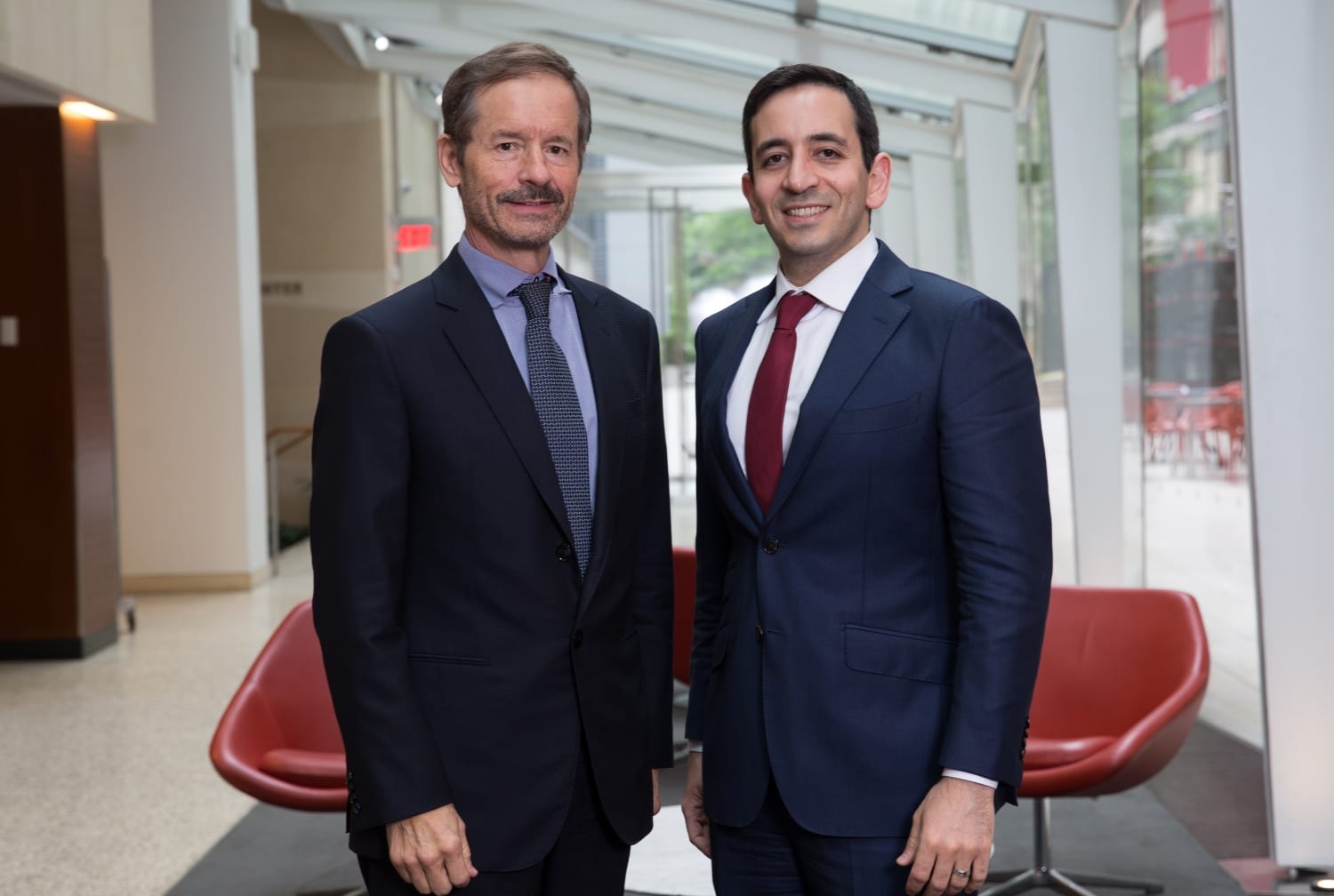Agios’ Lewis Cantley returns with a new company; Volastra Therapeutics and, he claims, a major oncological discovery

Lewis Cantley was a bit confused when he got an email from a young researcher who wanted to come to his Cornell lab and work on a semi-obscure phenomenon in cell biology: Lagging chromosomes.
“I said ‘I don’t know much about lagging chromosomes,’” Cantley, who became famous for discovering the PI3K pathway and its role in cancer, told Endpoints News.

But the researcher, Samuel Bakhoum, insisted. At Memorial Sloan Kettering, he had noticed the phenomenon appeared more often in metastatic cancers than in primary (non-metastatic) cancer. He had a hunch as to why and he wanted to investigate it with Cantley, who he thought could give him the cancer expertise he lacked.
Cantley tried to dissuade him.
“But undeterred, Sam joined my lab and began pursuing this,” Cantley said. “And it was clear he had found something very exciting.”
Today, Cantley, Bakhoum and a third partner named Olivier Elemento announced they have turned that finding into a company: Volastra Therapeutics. And they’ve convinced Polaris Partners and a handful of other ventures to put $12 million behind an audacious claim.
The trio say they’ve discovered one of, if not the, method by which cancers spread across the body. And they say they’ve figured out potential ways to drug it. That would mean, in other words, taking a cancer that would normally colonize like 17th century Europeans and fixing it to its original home.
“We can take a cell that’s chromosomally unstable and fix it so chromosomes won’t lag behind,” Cantley, who previously founded Agios and Petra Pharma, said. “And those cells will not metastasize.”
If the work holds up, Bakhoum says this would clear a significant wall in 21st-century cancer research: Genetic testing and treatments have begun to revolutionize cancer medicine but the genetic causes of metastasis — the thing that ultimately kills most patients — have remained elusive.
Efforts to find oncogenes that fuel cancer metastasis in the same way HER2 or ALK fuel cancer formation have come up empty.
“It’s left a big question in the field,” Bakhoum, who now runs a lab at Memorial Sloan Kettering, told Endpoints. “And there’s a lot of unmet need.”
The basis of the company is those lagging chromosomes. When a healthy human cell divides, it distributes its chromosomes evenly between the two daughter cells: 46 go to each, every set of chromosomes drawn in two directions as you see in a high school biology text.
But in cancer cells, this process is sometimes disrupted. Chromosomes don’t properly separate — they lag behind — or get caught in between two dividing cells. Over hundreds of divisions across billions of cells, this can lead to wild variations in the number of chromosomes between two cells in a single cancer: 90 in one, 30 in another.
“It’s a form of chromosomal chaos,” Bakhoum said.
By itself, this is dangerous and can potentially cause genetic mutations that help fuel cancer and resistance to treatments. But amid that chaos, chromosomes can sometimes end up outside the nucleus. The cells, detecting DNA in the cytoplasm, assume it’s viral DNA and trigger inflammation to root it out.
The inflammatory system is also a system of intra-body transport, sending white blood cells to and from the wound, dispatching dendritic cells to the lymph nodes. Bakhoum said his work shows that the cancer cells ride this internal migration.
“They behave almost like immune cells,” Bakhoum said, adding they’re not very good at moving and surviving but with billions of cells, some latch on.
The company is still early-stage and Cantley and Bakhoum are tight-lipped about a timeline or what their drug candidates look like. Bakhoum said they could either treat the inflammation or use the inflammation as a vulnerability to attack the cancer.
But he added that his company’s specific therapies were almost beside the point.
“Chromosomal instability has been considered a black box, we didn’t know where to begin,” Bakhoum said. “It allows now for the first time to slowly and rigorously develop areas of therapeutic intervention.”
By: Jason Mast, Associate Editor at Endpoints News

Leave a comment